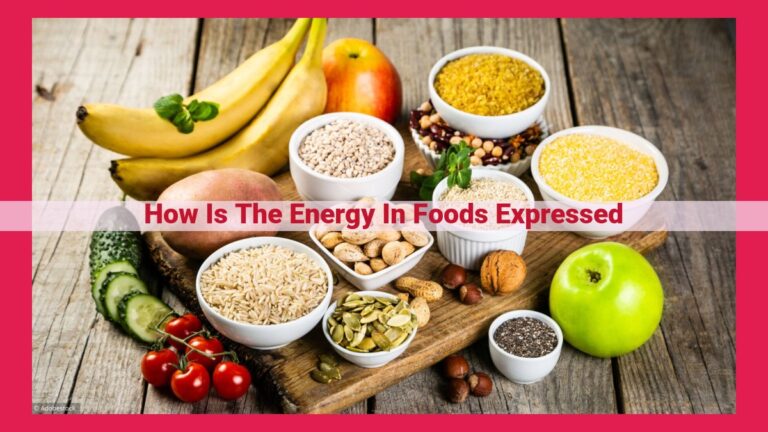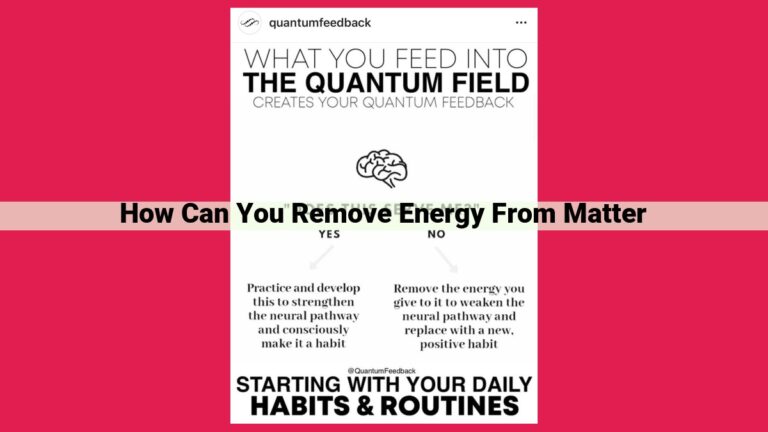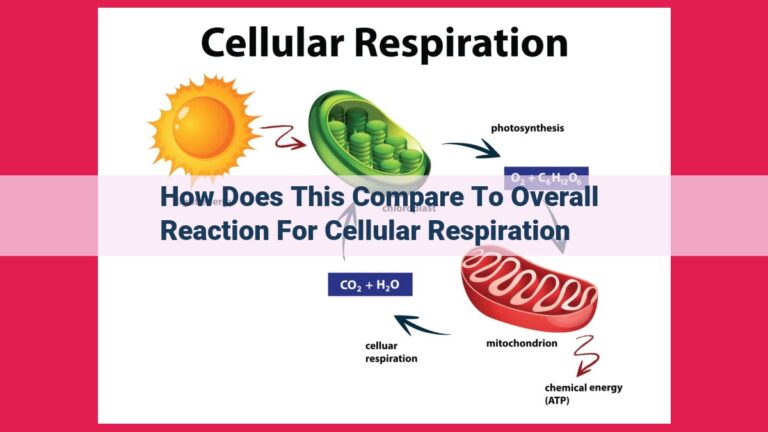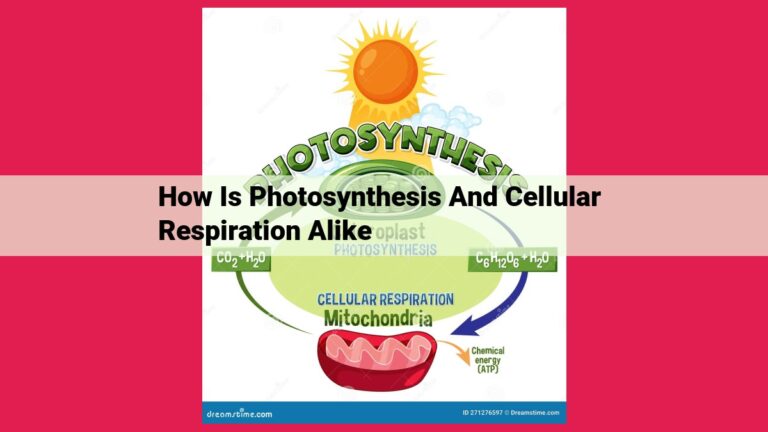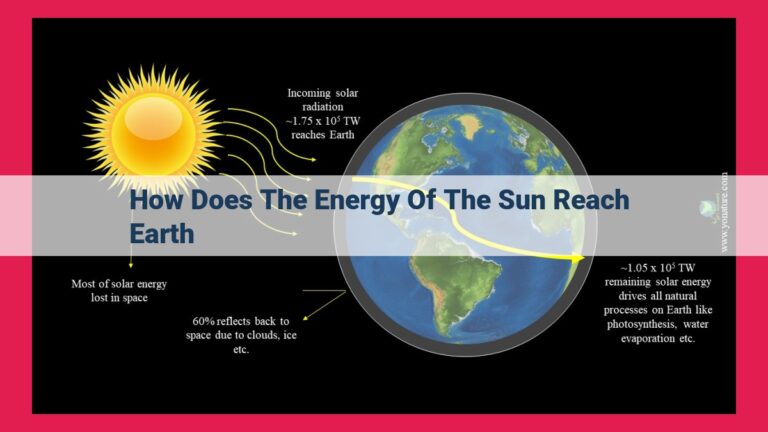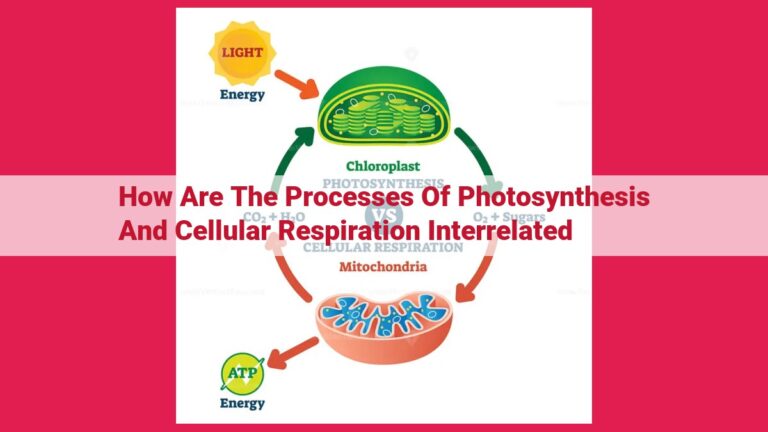Optimize Energy Transfer In Ecosystems For Ecosystem Health And Stability
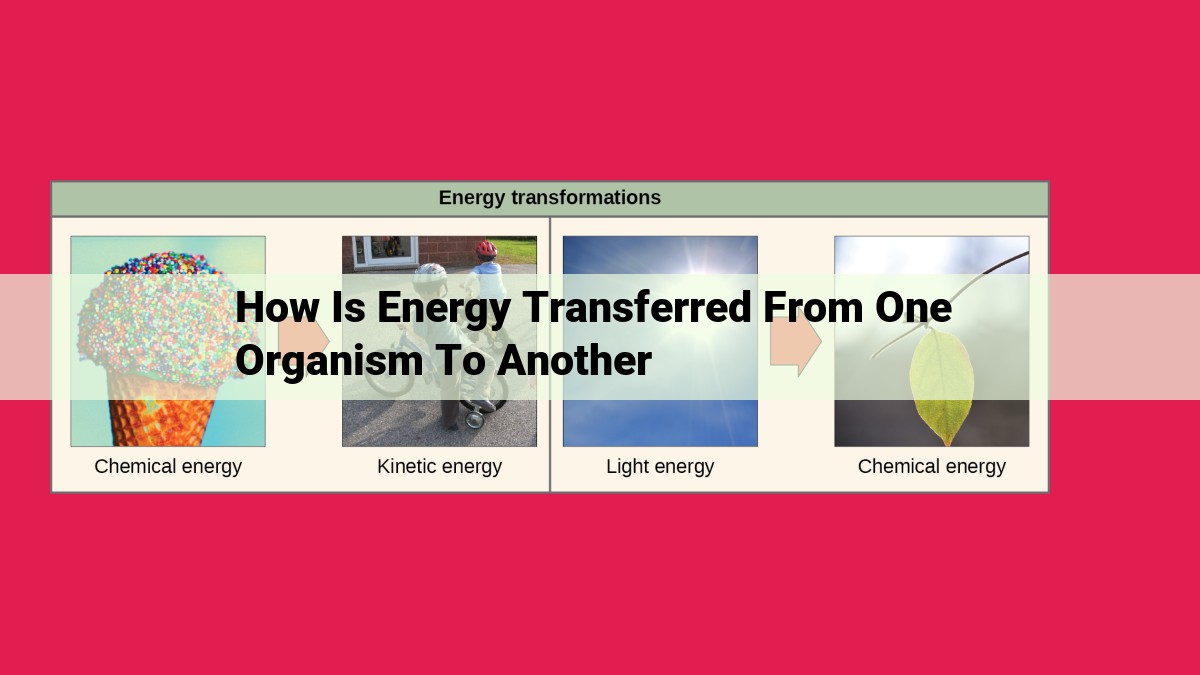
Energy flows through ecosystems through a process called energy transfer. This occurs when organisms consume other organisms, transferring the energy stored in the consumed organism to the consumer. Producers (plants) convert sunlight into energy through photosynthesis, which is then passed on to consumers (animals) who eat the plants. Decomposers (bacteria and fungi) break down dead organisms, releasing energy back into the environment. Energy transfer is a vital process for maintaining the balance and stability of ecosystems.
Energy Transfer in Ecosystems: Unraveling the Cycle of Life
Life on Earth is an intricate symphony of energy transfer, from the smallest organisms to the largest ecosystems. Understanding this process is crucial for unraveling the secrets of how our planet thrives. In this blog post, we’ll embark on a fascinating journey to explore the complexities of energy transfer in ecosystems.
Food Chains: The Tapestry of Life
Imagine a web woven with threads of life. This is a food chain, a sequence of organisms through which energy and nutrients flow. Producers, like plants and algae, weave the foundational layer of this web through photosynthesis. This remarkable process converts sunlight into chemical energy, transforming inorganic matter into the fuel that sustains all other life.
Consumers: The Interconnected Feast
Once energy enters the ecosystem, a chain reaction of consumption begins. Consumers are organisms that can’t produce their own food and must rely on others for sustenance. Primary consumers, such as herbivores, feast directly on producers. Secondary consumers, like carnivores, prey on primary consumers. This hierarchy of consumption continues through tertiary consumers and beyond, creating a complex interconnected web of feeding relationships.
Trophic Levels: Layering the Energy Pyramid
Within food chains and food webs (interconnected food chains), organisms are organized into trophic levels. Each level represents a step in the energy transfer process, with each level containing less energy than the one below it. This hierarchy forms an energy pyramid, visually depicting the distribution of energy throughout the ecosystem.
Producers: The Sun-Kissed Foundation
Producers are the energy gateways of ecosystems. Through photosynthesis, they convert sunlight into chemical energy stored in glucose, the basic unit of energy for all living organisms. Plants, algae, and certain bacteria play this vital role, providing the foundation for the entire food web.
Ecological Efficiency: Quantifying Energy Flow
Ecological efficiency measures the efficiency of energy transfer between trophic levels. Only a fraction of the energy consumed by an organism is used for growth and reproduction; the rest is lost through respiration, excretion, or other processes. This limited efficiency explains why energy pyramids narrow as they ascend, with fewer organisms able to exist at higher trophic levels.
Understanding energy transfer in ecosystems is crucial for grasping the intricate balance of nature. From the sun’s golden rays to the smallest microorganism, every participant plays a vital role in this symphony of life. By unraveling the complexities of this process, we gain deeper insights into the interconnectedness of our planet and the delicate dance of energy that sustains us all.
Photosynthesis: The Foundation of Energy Transfer
In the tapestry of life, photosynthesis emerges as the cornerstone of energy transfer. This intricate process, undertaken by producers (plants, algae, and some bacteria), harnesses the power of sunlight to transform carbon dioxide and water into oxygen and energy-rich glucose. This glucose acts as the primary food source for all organisms, forming the very foundation of food chains and food webs.
Cellular Respiration: Energy Release
Cellular respiration serves as the counterpart to photosynthesis, occurring in the cells of all living organisms. This process consumes glucose and other organic molecules to produce carbon dioxide, water, and energy. This energy, stored as ATP (adenosine triphosphate), fuels the myriad of biological processes that sustain life.
The Interplay of Photosynthesis and Cellular Respiration
Photosynthesis and cellular respiration engage in a continuous dance, connecting plants and animals in a symbiotic relationship. Plants produce oxygen and glucose through photosynthesis, providing sustenance for animals. Animals, in turn, consume plants and release carbon dioxide through respiration, creating the raw materials for photosynthesis to replenish the cycle.
Ecological Efficiency: Measuring Energy Transfer”s Efficiency
Ecological efficiency quantifies the amount of energy transferred from one trophic level to the next. At each level, only approximately 10% of the energy consumed is passed on to the next level. This loss of energy occurs as heat and other forms of non-useful energy. The pyramid shape of food webs, with fewer organisms at higher trophic levels, reflects this gradual energy loss.
Trophic Levels: The Stratified Architecture of Energy Flow in Ecosystems
Within the intricate tapestry of ecosystems, the transfer of energy takes on a hierarchical organization known as trophic levels. These levels form a layered structure, each occupied by organisms with distinct feeding patterns that determine their position in the energy flow.
The foundation of this structure is occupied by producers, the photosynthetic organisms that harness sunlight to convert inorganic matter into organic compounds. These organisms, such as plants and algae, form the first trophic level.
Next in the hierarchy come primary consumers, the herbivores that feed directly on producers. These animals consume the organic compounds produced by plants, converting them into energy for their own survival.
The energy flow continues to higher trophic levels as secondary consumers enter the picture. These carnivores prey on primary consumers, transforming the energy stored in their bodies into their own.
The hierarchy extends further with tertiary consumers, carnivores that feed on secondary consumers. At each step, energy is transferred and transformed, with a diminishing amount reaching higher trophic levels.
Trophic levels play a crucial role in maintaining the balance and stability of ecosystems. They determine the flow of energy and nutrients, influence species diversity, and regulate population sizes. Understanding trophic levels is essential for unraveling the intricate web of interactions that shape the natural world.
Producers: The Foundation of Life’s Energy Cycle
At the very heart of every ecosystem, where life flourishes and the intricate dance of nature unfolds, lies a group of organisms known as producers. These humble creatures, often overlooked, play a vital role in orchestrating the flow of energy that sustains all life on Earth.
What are Producers?
Producers, primarily plants and certain microorganisms, are the cornerstone of food chains and food webs. They possess the remarkable ability to harness sunlight through the process of photosynthesis, transforming it into chemical energy. This energy, stored within the bonds of glucose molecules, becomes the foundation upon which the entire ecosystem is built.
Photosynthesis: The Energy Transformer
Photosynthesis is the magical process by which producers convert sunlight into usable energy. This intricate dance of chlorophyll, water, and carbon dioxide results in the creation of glucose, the primary fuel for all living organisms. As producers absorb sunlight, they release oxygen into the atmosphere, enriching the air we breathe and sustaining the delicate balance of life.
The Food Chain’s Foundation
Producers form the base of food chains, providing the initial source of energy for all other organisms. Primary consumers, such as herbivores, feed directly on producers, consuming the plants that have captured sunlight’s energy. This energy is then passed up the food chain as predators consume herbivores and so on.
The Web of Life: Food Webs
In nature, food chains rarely exist in isolation. Instead, they intertwine and overlap, forming complex food webs. Producers serve as the foundation of these interconnected webs, providing sustenance to a diverse array of organisms. The energy they capture through photosynthesis nourishes the entire ecological community, sustaining the delicate balance that makes life possible.
The Essential Role of Producers
Without producers, the energy cycle that sustains life would collapse. Their ability to convert sunlight into chemical energy is the lifeblood of ecosystems, providing the foundation for all other trophic levels. From the towering trees that dominate forests to the microscopic algae that thrive in oceans, producers play an indispensable role in maintaining the health and vitality of our planet.
Producers, the unsung heroes of ecosystems, are the foundation of life’s energy cycle. Their ability to capture sunlight through photosynthesis and convert it into usable energy forms the very basis of food chains and food webs. Without producers, the intricate tapestry of life on Earth would unravel, leaving a silent and desolate world in its wake. As we marvel at the beauty and complexity of nature, let us never forget the humble role that producers play in making life possible.
Consumers: The Intermediary Links in the Energy Transfer Chain
In the intricate tapestry of ecosystems, energy flows through various levels of organisms. Consumers play a pivotal role as intermediaries, transferring energy further up the food chain while maintaining ecological balance.
Classification of Consumers
Consumers are broadly classified based on their feeding habits and trophic level:
-
Primary Consumers (Herbivores):
These organisms feed directly on producers (plants). They consume plant matter, such as leaves, stems, and fruits. Examples include cows, deer, and grasshoppers.
-
Secondary Consumers (Carnivores):
Secondary consumers feed primarily on primary consumers. They hunt and consume animals that are herbivorous. Examples include cats, foxes, and eagles.
-
Tertiary Consumers (Top Predators):
At the apex of the food chain, tertiary consumers feed on secondary consumers. These are carnivores that have no natural predators, such as lions, tigers, and sharks.
Ecological Interactions
Consumers engage in a complex web of ecological interactions:
- Predation: Consumers hunt and kill other organisms for sustenance. This interaction influences prey species’ abundance and behavior.
- Competition: Consumers may compete for shared food resources. Competition can regulate populations and shape community dynamics.
- Mutualism: In some cases, consumers form mutually beneficial relationships with other organisms. For example, some birds feed on insects that harm plants, providing a service to the plant community.
Consumers are essential components of ecosystems, linking producers and top predators in an intricate chain of energy transfer. Their diverse feeding habits and ecological interactions maintain biodiversity and shape the structure and function of ecological communities. By understanding the role of consumers, we gain insights into the delicate balance and interconnectedness of life on Earth.
Energy Pyramids
- Explain the concept of energy pyramids and their importance in understanding energy flow through ecosystems. Include related concepts like trophic levels, food chains, and ecological efficiency.
Energy Pyramids: Unveiling the Flow of Energy in Ecosystems
Imagine an ecosystem as a grand tapestry, where every living organism plays a vital role in the transfer of energy. This energy flows from the sun, the ultimate source of all life, to the producers, consumers, and decomposers that make up the intricate web of life. Understanding the pathways of energy transfer is crucial for comprehending the dynamics and sustainability of ecosystems.
One of the most iconic ways to visualize energy flow is through energy pyramids. These graphical representations depict the trophic levels within an ecosystem, with each level representing a different group of organisms based on their feeding habits. The base of the pyramid is occupied by the producers, the organisms that convert sunlight into energy-rich molecules through photosynthesis. These producers form the foundation of the food chain, providing sustenance for the consumers that follow.
Above the producers lie the primary consumers, herbivores that feed directly on plant material. Secondary consumers are carnivores that prey upon primary consumers, while tertiary consumers are carnivores that hunt secondary consumers. The pyramid continues upward, with each trophic level supporting fewer individuals due to the loss of energy at each transfer.
The energy pyramid not only illustrates the feeding relationships within an ecosystem but also highlights the ecological efficiency of energy transfer. Ecological efficiency refers to the proportion of energy that is transferred from one trophic level to the next. As energy flows through the pyramid, a significant portion is lost as heat and other forms that cannot be utilized by organisms. This means that the biomass, or total weight of living organisms, decreases at each higher trophic level.
The shape of the energy pyramid can provide insights into the stability and resilience of an ecosystem. In a healthy ecosystem, the base of the pyramid is wide, indicating a robust population of producers. This broad base supports a smaller number of consumers at each subsequent trophic level, creating a stable and sustainable energy flow. In contrast, a narrow-based pyramid suggests a fragile ecosystem with limited energy resources and a potential for disruption.
Energy pyramids are a powerful tool for understanding the complex mechanisms that drive energy transfer in ecosystems. They help us visualize the interconnectedness of living organisms and highlight the importance of preserving the delicate balance of nature. By studying energy pyramids, we can gain insights into the health and sustainability of ecosystems, enabling us to make informed decisions that safeguard the future of our planet.
Ecological Efficiency: Understanding the Energy Transfer Game
In the intricate tapestry of ecosystems, energy plays a pivotal role. From the sun’s rays to the smallest of creatures, energy flows in a continuous dance. However, not all energy is created equal, and understanding how it’s transferred between living organisms is crucial to comprehending the stability and resilience of our planet’s ecosystems.
Ecological efficiency is a key concept that sheds light on this energy journey. It refers to the proportion of energy transferred from one trophic level to the next. Trophic levels represent the different stages in a food chain, with producers (plants) at the base, herbivores (primary consumers) feeding on them, carnivores (secondary consumers) preying on herbivores, and so on.
As energy moves up the food chain, a significant portion is lost. This is because organisms use energy for various processes, including metabolism, growth, and reproduction. The energy that’s not used is often dissipated as heat. Ecological efficiency measures how much of the initial energy available at one trophic level is passed on to the next.
Typically, ecological efficiency ranges from 10% to 20%. This means that only about 10-20% of the energy available at one trophic level is transferred to the next. The remaining energy is lost as heat or used by non-food organisms, such as decomposers.
Understanding ecological efficiency is critical for several reasons. It helps us grasp the limitations of energy transfer and the potential bottlenecks that can arise in food chains. Additionally, it aids in predicting the consequences of environmental stressors, such as pollution or climate change, on ecosystem stability.
In conclusion, ecological efficiency is a fundamental concept that reveals the efficiency of energy transfer in ecosystems. It underscores the importance of energy conservation and the delicate balance of life on Earth. By understanding this concept, we can better appreciate the intricate workings of our planet’s ecological systems and make informed decisions to ensure their long-term health and sustainability.
